Exploring the Diversity: 11 Creative Types of Platform Beds By Wood
Platform beds come in various wood types. Each wood has unique durability and style. Oak is one of the strongest hardwoods. It lasts for over 50 years with care. Maple has a smooth, modern look. It resists scratches better than softwoods. Walnut is dark and elegant. It adds luxury to any bedroom. Pine is a budget-friendly choice. It has a light color and natural knots.
Bamboo is an eco-friendly option. It grows 35 times faster than oak. Reclaimed wood offers a rustic touch. It reuses old materials for a unique look. Different woods affect a bed’s strength and design. Choosing the right one depends on your needs. Whether you want durability or style, wood matters. This guide will explore various wooden platform beds.
Overview of Platform Beds
Platform beds have a simple and modern design. They do not need a box spring. The base supports the mattress directly. This makes them lower than traditional beds. Most platform beds are 12 to 18 inches high. This height offers easy access and stability. They come in wood, metal, or upholstered styles. Wooden platform beds are the most durable choice.
These beds provide firm and even support. Slats or a solid base hold the mattress. Slats improve airflow and prevent mold growth. Solid bases offer extra strength for heavy mattresses. Many platform beds include built-in storage. Drawers or shelves maximize bedroom space.
Platform beds fit all mattress types. Memory foam, latex, and spring mattresses work well. These beds reduce motion transfer for better sleep. They also help with spine alignment and posture. The minimalist look suits modern and classic spaces.
Platform beds are popular worldwide. The global bed frame market was $4.6 billion in 2022. Their durability and style make them a top choice.
Types of Platform Beds
There’re 11 types of platform beds that we explained below with their wood qualities, styles, durability, patterns and properties;
1. Oak Wood Platform Beds
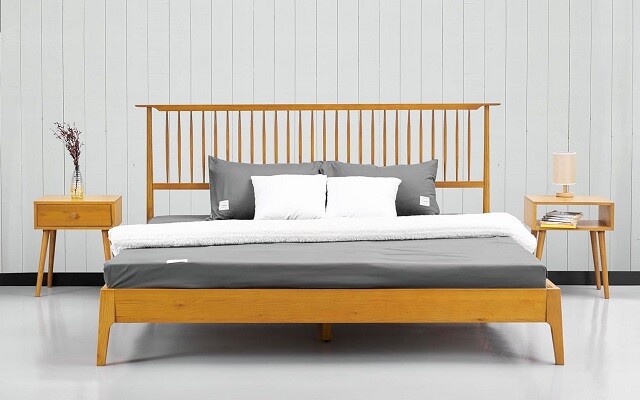
Durability and Strength
Oak is a strong and dense hardwood. It lasts for decades with proper care. The Janka hardness of red oak is 1,220 lbf. This makes it highly resistant to wear and tear.
Distinctive Grain Patterns
Oak features prominent grain patterns. These patterns add texture and depth. Each bed frame has a unique appearance. Oak’s grain looks beautiful with stains or natural finishes.
Versatile Styles
Oak platform beds suit many interior styles. They range from rustic to modern designs. A sleek oak finish enhances contemporary bedrooms. Sturdy traditional frames fit classic interiors.
Also Read: Why should you buy an French Oak Platform Bed
2. Teak Wood Platform Beds
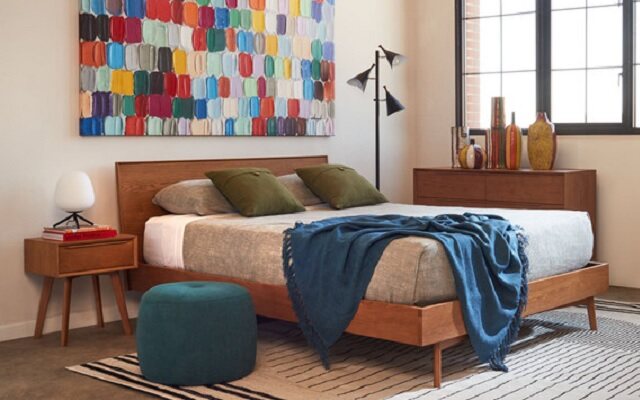
Natural Resistance to Moisture
Teak contains natural oils that repel moisture. It resists warping, rot, and pests. This makes it ideal for humid climates.
Rich Color and Luster
Teak has a golden-brown hue. It darkens over time, adding elegance. Its rich, natural sheen enhances bedroom aesthetics.
Exceptional Longevity
Teak is highly durable and dense. It has a Janka hardness of 1,070 lbf. This ensures long-lasting performance and structural stability.
3. Walnut Wood Platform Beds

Dark and Luxurious Appearance
Walnut has a deep brown tone. It often features darker streaks. This gives a bold and sophisticated look.
Smooth and Straight Grain
Walnut wood has a fine, straight grain. It feels smooth to the touch. The texture makes it ideal for minimalist designs.
High Durability
Walnut is a strong hardwood. Its Janka hardness is around 1,010 lbf. This ensures excellent resistance to dents and scratches.
4. Maple Wood Platform Beds
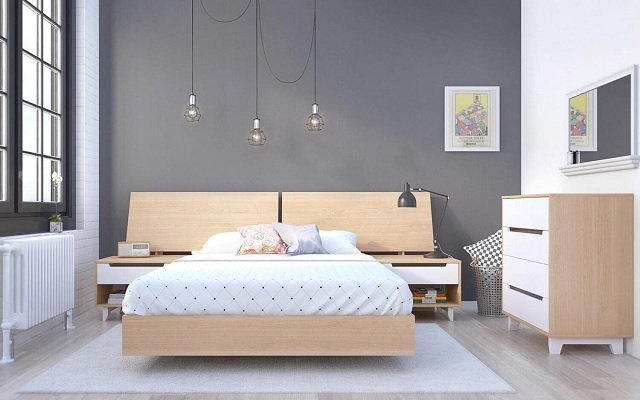
Light and Neutral Color
Maple has a pale, creamy hue. It brightens up small or dark rooms. The light shade complements modern interiors.
Extremely Hard and Dense
Maple is one of the hardest woods. It has a Janka hardness of 1,450 lbf. This makes it resistant to heavy use.
Subtle and Even Grain
Maple’s grain is fine and uniform. It looks sleek and refined. This makes it perfect for contemporary furniture.
5. Mahogany Wood Platform Beds
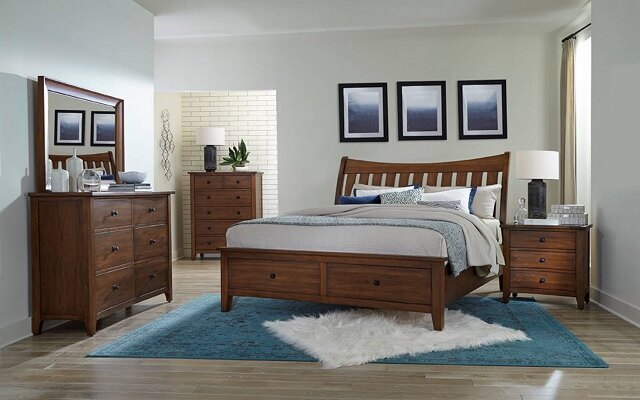
Deep Reddish-Brown Color
Mahogany has a rich, warm tone. It darkens over time, enhancing elegance. The color adds a luxurious feel to bedrooms.
Straight and Even Grain
Mahogany has a smooth, consistent grain. It polishes beautifully, enhancing its natural shine. This gives a refined and polished look.
Exceptional Strength and Longevity
Mahogany is highly durable. It has a Janka hardness of 800-900 lbf. This ensures stability and resistance to damage.
6. Cherry Wood Platform Beds
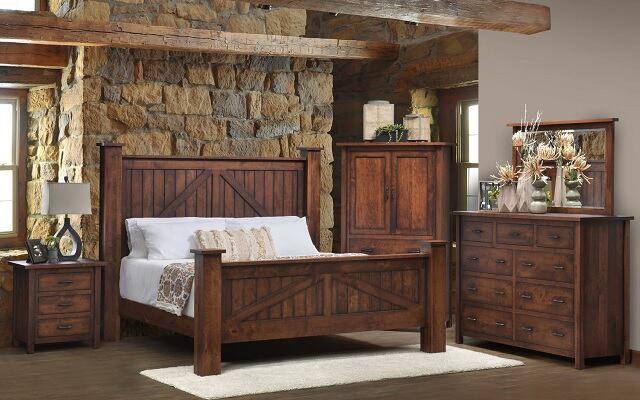
Warm and Reddish Hue
Cherry wood starts with a light pink tone. It darkens to a deep reddish-brown over time. The aging process enhances its charm.
Smooth and Even Grain
Cherry has a fine, wavy grain. This gives it a soft, elegant look. It polishes well for a glossy finish.
Medium Hardness and Stability
Cherry is moderately hard. It has a Janka hardness of 950 lbf. This ensures durability without excessive weight.
7. Pine Wood Platform Beds
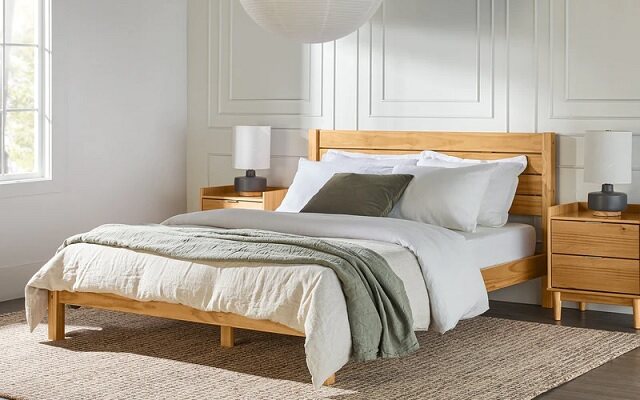
Affordable and Lightweight
Pine is a softwood and more affordable. It is easy to move and assemble. This makes it perfect for budget-friendly furniture.
Distinctive Knotty Patterns
Pine wood often features knots. These create a rustic and cozy appearance. The natural knots add character to the bed.
Less Dense but Sturdy
Pine is softer than hardwoods. Its Janka hardness is 380-870 lbf. With proper care, it can last for many years.
8. Bamboo Platform Beds
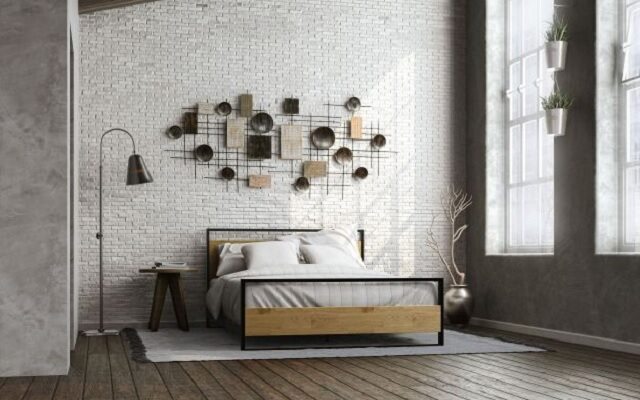
Eco-Friendly and Sustainable
Bamboo grows rapidly, making it highly sustainable. It matures in just 3-5 years. This makes it an excellent eco-friendly choice.
Strong and Harder Than Oak
Bamboo is incredibly strong for its weight. It has a Janka hardness of 1,380 lbf. This makes it harder than many traditional hardwoods.
Modern and Sleek Look
Bamboo platform beds have a smooth surface. They come in light and dark finishes. Their simple design fits minimalist interiors.
9. Reclaimed Wood Platform Beds
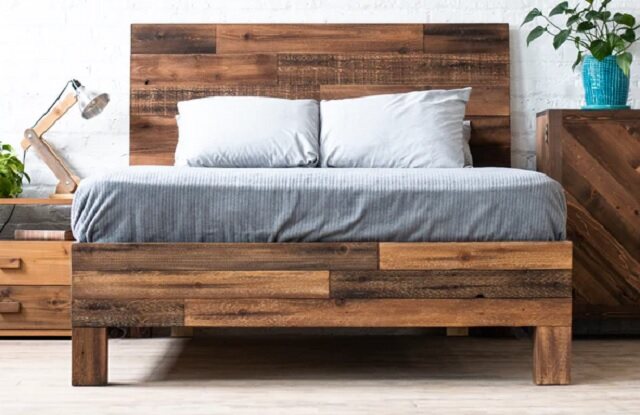
Sustainable and Unique
Reclaimed wood comes from old buildings and barns. It reduces waste and promotes recycling. Every piece has a distinct character.
Rich Texture and Weathered Look
Reclaimed wood has a rustic, aged appearance. It may feature nail holes and natural imperfections. These details add charm and authenticity.
Varied Hardness and Durability
The strength depends on the original wood type. Hardwoods like oak and walnut last longer. Proper sealing increases longevity.
10. Ash Platform Beds
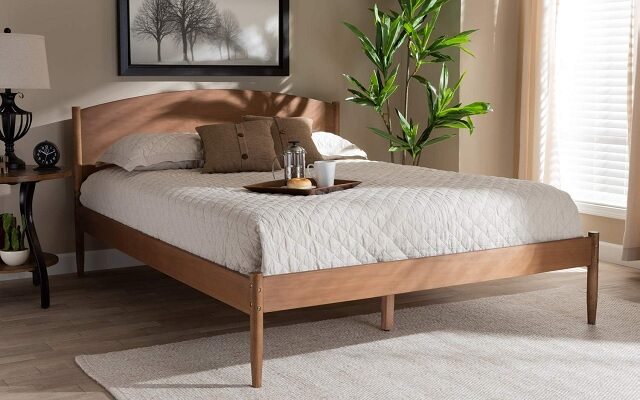
Light Color with Dark Streaks
Ash has a pale tone with dark lines. It creates a stylish contrast. The wood complements modern and classic interiors.
Strong and Shock-Resistant
Ash is highly durable and flexible. Its Janka hardness is 1,320 lbf. It withstands weight and impact without cracking.
Straight and Open Grain
Ash features a well-defined, straight grain. This gives it a smooth and polished finish. It blends well with various styles.
11. Rubberwood Platform Beds
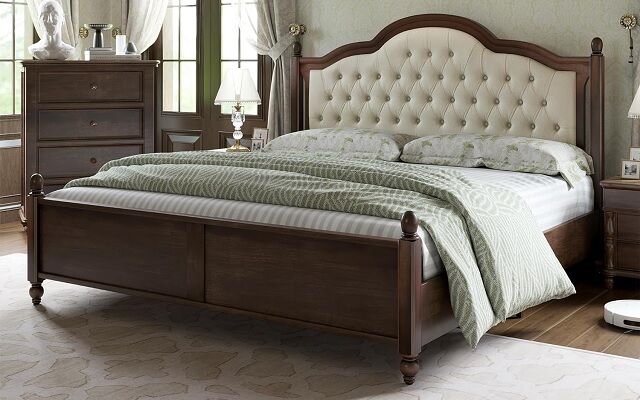
Eco-Friendly and Cost-Effective
Rubberwood is harvested from rubber trees. It is a byproduct of latex production. This makes it an environmentally friendly choice.
Moderately Hard and Durable
Rubberwood is denser than pine but softer than oak. Its Janka hardness is around 960 lbf. It resists wear but requires regular care.
Light and Neutral Finish
Rubberwood has a pale, beige color. It accepts stains and paints well. This allows for versatile design options.

Pingback: 10 Types Of Wingback Beds: Explore Key Benefits And Features - Bedding Expertise